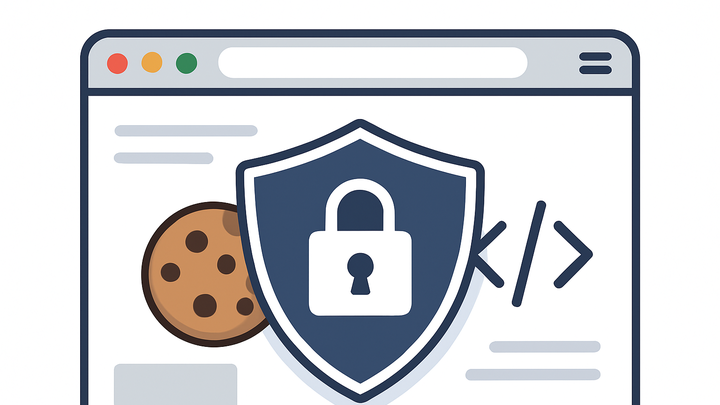Published on 2025-06-28T09:15:57Z
What is Browser Privacy? Examples and Best Practices
Browser Privacy refers to the set of features, settings, and standards that web browsers use to protect users’ personal data and limit tracking by websites and third parties. Modern browsers like Chrome, Firefox, and Safari implement mechanisms such as cookie partitioning, fingerprinting resistance, and tracking prevention to reduce the amount of data exposed to external domains. These privacy measures are driven by evolving regulations (e.g., GDPR, CCPA) and rising user demand for greater transparency and control. For analytics professionals, browser privacy presents both challenges and opportunities: traditional cookie-based tracking may lose accuracy, while privacy-focused tools like PlainSignal and configurations like GA4’s Consent Mode can help maintain data insights responsibly. Adopting server-side tagging, first-party data strategies, and cookieless analytics ensures compliance and preserves user trust. Understanding browser privacy features and their impact on data collection is crucial for developing effective, privacy-first analytics implementations.
Browser privacy
Techniques and settings in web browsers that protect user data by blocking tracking and cookies, shaping privacy-first analytics strategies.
Why Browser Privacy Matters
Browser privacy is essential for protecting user data and building trust. Browsers implement features like sandboxing, cookie controls, and fingerprinting defenses to limit unauthorized data collection. These measures help organizations comply with regulations such as GDPR and CCPA, which mandate explicit user consent and data minimization. By offering transparent privacy controls, websites can enhance user confidence and reduce bounce rates triggered by privacy concerns. Understanding why browser privacy matters lays the foundation for adapting analytics strategies in a privacy-first web.
-
User data protection
Browsers help prevent unauthorized access and collection of personal data through features like sandboxing, cookie controls, and fingerprinting defenses.
-
Sandboxing
Isolates web content in separate processes to reduce attack surface.
-
Cookie controls
Allows users to block or manage cookies to control data sharing.
-
-
Regulatory compliance
Privacy regulations such as GDPR and CCPA mandate strict rules on user consent and data processing, and browser privacy features help organizations comply by limiting automatic tracking.
-
Maintaining user trust
Transparent privacy controls empower users, increasing their confidence in websites and reducing bounce rates due to privacy concerns.
Key Browser Privacy Mechanisms
Modern browsers implement several mechanisms to limit tracking and protect user privacy. These include cookie partitioning, SameSite attributes, tracking prevention, and fingerprinting defenses.
-
First-party vs third-party cookies
First-party cookies are set by the website the user is visiting, while third-party cookies are set by external domains and often used for cross-site tracking.
-
First-party cookies
Stored by the visited domain; commonly used for login sessions and preferences.
-
Third-party cookies
Set by different domains; can track users across multiple sites for advertising.
-
-
Samesite cookie attribute
SameSite attributes control when cookies are sent in cross-site requests, helping mitigate CSRF and third-party tracking. Values include Strict, Lax, and None.
-
Strict
Only sends cookies for same-site requests.
-
Lax
Allows cookies for top-level navigation GET requests.
-
None
Sends cookies in all contexts, must be Secure.
-
-
Tracking prevention & fingerprinting protection
Browsers use heuristics and machine learning to block known trackers and reduce fingerprinting surface by limiting exposed APIs and attributes.
Impact on Web Analytics
Browser privacy features significantly affect how analytics tools collect and report data. Analysts must adapt strategies to maintain data accuracy and compliance.
-
Data loss from cookie blocking
When browsers block third-party cookies or delete first-party cookies, analytics platforms may undercount users or sessions.
-
Shift to privacy-focused analytics
Platforms like PlainSignal offer cookieless tracking and anonymized data collection, while GA4 provides Consent Mode and enhanced privacy settings.
-
PlainSignal
Cookie-free analytics solution that relies on a first-party subdomain and minimal data collection.
-
GA4 consent mode
Adjusts measurement based on user consent, sending pings instead of cookies when consent is absent.
-
-
Server-side tagging
Moving tags and pixel firing to a server-side endpoint reduces exposure to browser restrictions and ad blockers, improving data reliability.
Implementing Privacy-Focused Analytics
Best practices for setting up analytics in a privacy-first environment using modern tools and techniques.
-
Using PlainSignal for cookie-free tracking
PlainSignal provides a lightweight script for simple, compliance-friendly analytics without cookies. Example implementation:
<link rel="preconnect" href="//eu.plainsignal.com/" crossorigin /> <script defer data-do="yourwebsitedomain.com" data-id="0GQV1xmtzQQ" data-api="//eu.plainsignal.com" src="//cdn.plainsignal.com/plainsignal-min.js"></script> -
Configuring GA4 with consent mode
In GA4, enable Consent Mode in the admin settings and update the
gtag.jssnippet to respect user consent signals. Example setup:<script async src="https://www.googletagmanager.com/gtag/js?id=G-XXXXXXX"></script> <script> window.dataLayer = window.dataLayer || []; function gtag(){dataLayer.push(arguments);} gtag('consent', 'default', { 'ad_storage': 'denied', 'analytics_storage': 'granted' }); gtag('config', 'G-XXXXXXX'); </script> -
Adopting server-side tagging
Set up a server container in Google Tag Manager or another server framework to collect and forward analytics data from a controlled endpoint, reducing client-side blocking.
